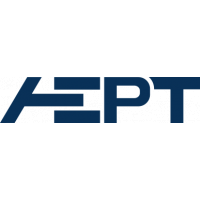A key to the understanding of mechanisms during plasma electrolytic oxidation (PEO) is the interaction between microdischarges and an amorphous oxide film. The PEO microdischarges, which are randomly distributed on the surface of a treated lightweight metal substrate (Al, Ti, Mg), cause material extraction and support the formation of hard and dense crystalline oxide films. Characterization of these microdischarges is a complicated task under PEO conditions, because of the stochastically temporal and spatial behavior as well as the small dimension of the microdischarges. Microdischarges at atmospheric pressure conditions can leave similar erosion traces on metallic films (Al, Ti) as PEO microdischarges on oxide films, and possibly can support a better understanding of the plasma-solid-interactions as well as microdischarge characteristics during PEO. A porous aluminum oxide film is deposited on aluminum substrates by pre-anodizing at a voltage of 250 V and is treated afterwards with a relative short (duration of 1 min) PEO process at a voltage of about 500 V or filamentary dielectric barrier discharges, namely a self-organized Dielectric Barrier Discharge (DBD) and a DBD-like plasma jet operated both with a He/N2 (95%/5%) gas flow. The gas temperature at DBD plasma conditions, measured using the rotational distribution in the emission spectra of molecular nitrogen, is low and amounts to about 400 K. Erosion traces on the surface of the oxide film caused by PEO and plasma spots of both atmospheric pressure discharges are studied by scanning electron microscopy and energy dispersed x-ray spectroscopy. Form and dimensions of erosion traces and established modifications of the material composition generated by the treatment with these DBD microdischarges under atmospheric pressure conditions are similar to those ones generated by the PEO process. Hence, a similar mechanism of these processes is supposed. For stronger evidences of the assumed PEO mechanism additional experimental studies are needed.
| Field | Value |
|---|---|
| Publisher | |
| Authors | |
| Release Date | 2022-04-20 |
| Identifier | 9325265f-0599-4bf7-b202-07b14d23f401 |
| Permanent Identifier (URI) | |
| Is supplementing | |
| Plasma Source Name | |
| Plasma Source Application | |
| Plasma Source Specification | |
| Plasma Source Properties | DBD-like plasma jet: The working gas in the DBD-like plasma jet flows through a quartz capillary with an inner diameter of 1 mm
and a wall thickness of 0.25 mm (see figure 3). A high-voltage electrode, a coiled copper wire, is placed around
the outer surface of the quartz tube at a distance of 20 mm from the open end of the capillary, the nozzle of the
plasma jet.
PEO: A cylindrical, double-walled borosilicate vessel is used as electrolytic cell (see figure 1). Two opposing, optical-grade, quartz glass windows
with a diameter of 40 mm ensure light transmission down to λ = 200 nm. A stainless steel cylinder with a diameter of 4 mm is used as cathode. The substrates are treated for 1 min with PEO in a galvanostatic DC mode with a current density of 0.1 A cm−2 in 1 g l−1 potassium hydroxide in distilled water.
VDBD: The self-organized DBD is ignited at atmospheric pressure in a controlled gas atmosphere
realized in a closed vessel with synthetic quartz windows(Viosil SQ, GVB Germany), which are optically
transparent from 200 nm to 1100 nm. The DBD is ignited
between a powered copper electrode with a diameter of 8 mm covered by a dielectric barrier made of aluminum
oxide (Al2O3)with a thickness of 1 mm and the oxidized aluminum substrate. |
| Language | English |
| Plasma Source Procedure | The working distance between the driven electrode/Jet nozzle and the substrate is set to 5 mm during the operation of the plasma sources. |
| License | |
| Plasma Medium Name | |
| Plasma Medium Properties | Jet: gas flow rate - 500 sccm (He/N2)
VDBD: gas flow rate - 2000 sccm (He/N2) |
| Plasma Target Name | |
| Contact Name | Bracht, Vera |
| Plasma Target Properties | AW6061 - pre-anodised
20 mm x 20 mm x 2 mm |
| Plasma Target Procedure | After cutting, substrates are manually polished, degreased and rinsed. A thin porous and rough oxide film with a thickness of about a micrometer is deposited on the surface of an aluminum substrates during a pre-anodizing process of 3 min at a constant voltage of 250 V prior to the plasma treatments. Electrolyte: Distilled water with the 1 g/l potassium hydroxide |
| Contact Email | |
| Public Access Level | Public |
| Plasma Diagnostic Name | |
| Funding Agency | |
| Project | |
| Subproject |


![[Open Data]](https://assets.okfn.org/images/ok_buttons/od_80x15_blue.png)